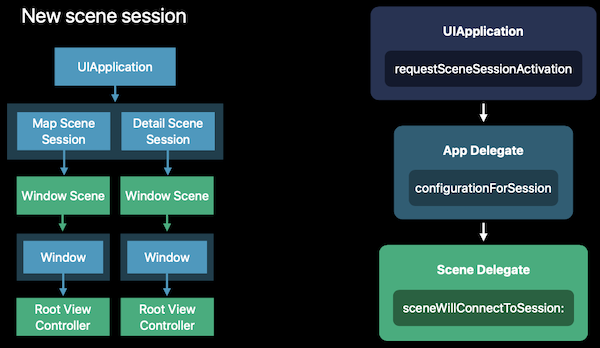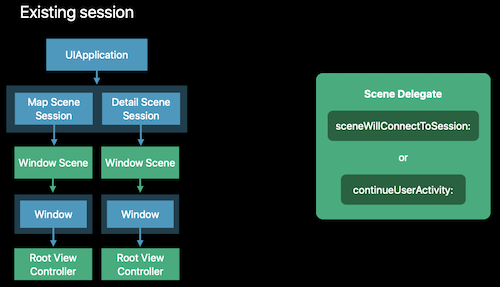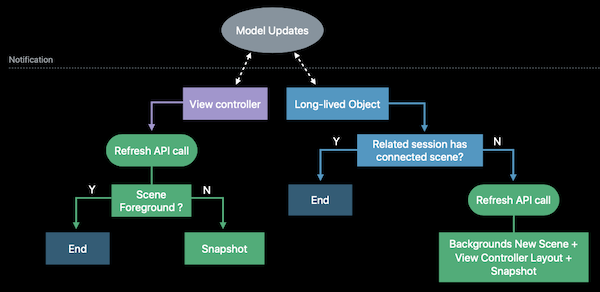# 246-Window Management in Your Multitasking App
# Activate
Activate a session only in response to direct and local user interaction
@UIApplicationMain
class AppDelegate: UIResponder, UIApplicationDelegate {
func activateSessionForClown(_ clown: Clown!, sourceScene: UIWindowScene?, errorHandler: ((Error) -> Void)? = nil) {
let existingSession = existingSessionForClown(clown)
// The userActivity is passed to UIScene.ConnectionOptions of scenewillConnectToSession.
let userActivity = userActivityForClown(clown)
let options = UIScene.ActivationRequestOptions.init()
// The system uses this information to avoid replacing the requestingScene with the activated one.
options.requestingScene = sourceScene
UIApplication.shared.requestSceneSessionActivation(existingSession, userActivity: userActivity, options: options, errorHandler: errorHandler)
}
}
1
2
3
4
5
6
7
8
9
10
11
12
2
3
4
5
6
7
8
9
10
11
12
# New Session

# Existing Session

For disconnected session, call sceneWillConnectToSession.
For connected session, call continueUserActivity
# Refresh
Refresh a session for user-relevant updates. 比如保持多个窗口同步。
func requestSceneSessionRefresh(_ sceneSession: UISceneSession)
1

Backgrounds New Scene: The scene is going then to be background connected
# Destroy
Destroy a session only in response to direct user interaction.
func requestSceneSessionDestruction(_ sceneSession: UISceneSession, options: UISceneDestructionRequestOptions?, errorHandler: ((Error) -> Void)? = nil)
1
# Animation
enum UIWindowScene.DismissalAnimation: Int {
case standard
case commit
case decline
}
class UIWindowScene.DestructionRequestOptions: UIScene.DestructionRequestOptions {
var windowDismissalAnimation: UIWindowScene.DismissalAnimation
}
1
2
3
4
5
6
7
8
9
2
3
4
5
6
7
8
9